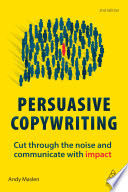

The foundation of persuasive copywriting lies in understanding your audience deeply. This means going beyond demographics and diving into psychographics, motivations, desires, and pain points. By creating detailed buyer personas, copywriters can tailor their messages to resonate with the specific needs and emotions of their target audience. This understanding allows for the crafting of messages that not only capture attention but also foster a connection and build trust. Effective copywriting speaks directly to the reader's experiences and aspirations, making them feel understood and valued.
Continue readingEmotion is a powerful driver of decision-making. Persuasive copywriting leverages emotional triggers to influence readers' actions. By tapping into feelings like fear, joy, anger, or nostalgia, copywriters can create compelling narratives that inspire readers to take action. This idea emphasizes the importance of storytelling in copywriting, where emotions are woven into the message to create a memorable experience. When readers connect with a story on an emotional level, they are more likely to engage with the content, share it, and ultimately convert into customers.
Continue readingClarity is key in persuasive copywriting. The message must be clear, concise, and easy to understand. Complicated language or convoluted sentences can confuse the reader and dilute the message's impact. The book emphasizes the need for simplicity in copy, advocating for straightforward language that communicates the core message without unnecessary embellishments. This clarity helps in guiding the reader toward the desired action, whether it’s clicking a link, signing up for a newsletter, or making a purchase. A clear call to action (CTA) is essential in directing the reader’s next steps.
Continue readingHeadlines are the first impression of any piece of copy and play a crucial role in capturing attention. The book outlines techniques for crafting compelling headlines that pique curiosity and encourage readers to engage with the content. Effective headlines often include elements such as urgency, benefit, and specificity. The idea is to create a hook that not only draws the reader in but also clearly indicates what they will gain from reading further. A well-crafted headline can significantly increase the likelihood of the content being read and shared.
Continue readingSocial proof is a psychological phenomenon where individuals look to the actions of others to determine their own. In persuasive copywriting, utilizing testimonials, case studies, and user-generated content can enhance credibility and persuade potential customers. The book discusses various forms of social proof, including expert endorsements, customer reviews, and success stories, which can help build trust and alleviate concerns. By showcasing positive experiences from others, copywriters can effectively reduce perceived risk and encourage readers to take action.
Continue readingA sense of urgency can be a powerful motivator in persuasive copywriting. The book explains how to instill urgency through time-limited offers, scarcity tactics, and compelling deadlines. By encouraging readers to act quickly, copywriters can increase conversion rates and drive immediate action. However, it’s essential to balance urgency with authenticity; overstating scarcity or urgency can lead to distrust. The key is to create genuine opportunities that prompt readers to engage without feeling manipulated.
Continue readingThe final key idea emphasizes the importance of testing and optimizing copy for better performance. The book advocates for a data-driven approach, where copywriters continuously test different elements of their writing—such as headlines, CTAs, and messaging—to determine what resonates best with their audience. A/B testing, analytics, and feedback loops are crucial in this process. By analyzing results and making informed adjustments, copywriters can refine their strategies and improve the effectiveness of their persuasive efforts over time.
Continue reading